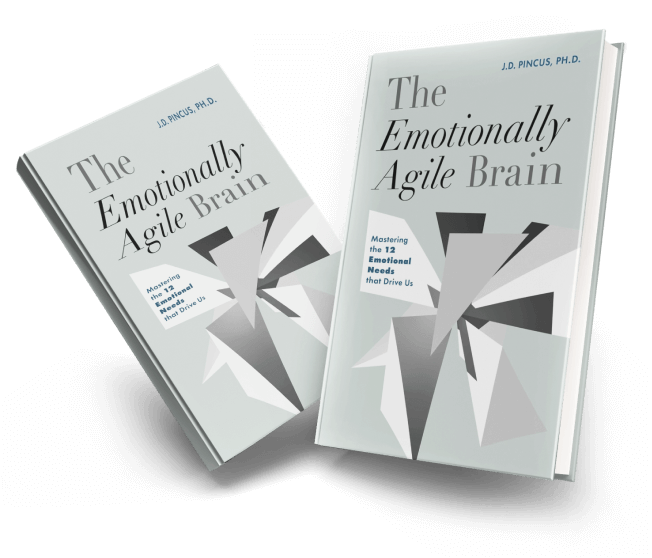In today’s workplaces—whether remote, hybrid, or face-to-face—teamwork is no longer just a nice-to-have; it’s a necessity. A team’s ability to communicate, adapt, and collaborate directly affects not only its output but also the emotional and mental well-being of its members. Yet, too often, team-building efforts focus solely on logistics and task coordination, ignoring the emotional undercurrents that drive performance. That’s where AgileBrain comes in.
This article explores the emotional heart of teamwork—what makes teams thrive or fall apart—and how the AgileBrain framework can help individuals and teams identify, understand, and address the emotional needs that underpin successful collaboration. We’ll also provide a clear, step-by-step process to help individuals and teams develop soft skills that matter most.
The Foundations of Effective Teamwork
At its core, effective teamwork is more than dividing tasks and holding meetings. It’s about creating an environment where people feel safe, empowered, and connected. Research and experience alike confirm that high-performing teams tend to share a few core behaviors.
Teams that excel communicate openly and clearly. There’s a steady exchange of ideas, information, and feedback. Communication isn’t just about talking—it’s about active listening, honest feedback, and the willingness to address conflict constructively. Alongside this, successful teams also demonstrate mutual trust and respect. When team members feel psychologically safe, they’re more likely to take risks, share ideas, and contribute meaningfully without fear of criticism or exclusion.
Equally important is a clear understanding of roles and responsibilities. Each team member knows what’s expected of them and how their work fits into the bigger picture. This clarity reduces confusion, increases efficiency, and allows everyone to stay focused on shared goals. When something goes wrong (and it always will, at times), team members hold themselves and each other accountable—without blame. They view mistakes as learning opportunities, not failures.
Adaptability is another hallmark of strong teams. In fast-moving environments, the ability to shift course, brainstorm new approaches, or pivot in response to change sets high-performing teams apart. And through it all, there’s a shared commitment to the team’s purpose. Everyone is rowing in the same direction, motivated by a common goal and vision.
Listen to the Podcast
Key Takeaways: What Successful Teams Do
When these practices are in place, teams enjoy higher morale, innovation, and productivity. But behavior is just the surface. Underneath lies a foundation of emotional needs that must be understood and supported.
Balancing Expectations: Team and Individual Responsibility
In a thriving team, expectations are shared and mutually reinforcing. At the team level, the collective is expected to create and maintain a culture of psychological safety—where emotions can be expressed without fear, where feedback is welcomed, and where each person feels like they belong. Teams are also responsible for ensuring clear roles, providing resources, encouraging collaboration, and modeling the shared mission that unites everyone.
At the individual level, each team member must rise to the occasion. That means showing up with effective communication skills—speaking clearly, listening with intent, and being responsive. It also means owning your work: delivering on deadlines, staying accountable, and being willing to admit when help is needed. Team members must bring flexibility to the table, adjusting when priorities shift or plans change. And above all, they must approach their colleagues with respect, empathy, and professionalism.
These expectations—when met on both sides—create a powerful dynamic. Teams flourish when each person contributes their best, and individuals grow when the team supports their development.
Key Takeaways: Team vs. Individual Expectations
These expectations are mutually reinforcing. When each individual brings their best, the team thrives. When the team environment supports individual growth, engagement increases.
Team Expectations
Individual Expectations
AgileBrain: A Lens on Emotional Needs
So, how do we dig beneath surface behaviors to understand what’s really driving team performance? The AgileBrain framework is designed to help individuals and teams explore their emotional needs in four distinct domains: Self, Material, Social, and Spiritual. These domains map the human experience and reflect what we all need to feel motivated, fulfilled, and engaged.
Self Domain
(Emotional Awareness & Resilience)
The Self domain focuses on personal emotions, self-awareness, and emotional regulation. It helps individuals recognize their strengths, stressors, and motivations, which are essential for self-management within a team.
Team Expectations
Individual Expectations
Soft Skills Development
Impact on Teams
By addressing the emotional needs within the Self domain, team members contribute to higher morale, reduced conflict, and increased accountability.
Material Domain
(Work Environment & Resources)
The Material domain relates to how external resources—such as tools, workload, and organizational support—affect an individual’s emotions and performance. It focuses on whether people have what they need to succeed in their roles.
Team Expectations
Individual Expectations
Soft Skills Development
Impact on Teams
By addressing emotional needs in the Material domain, teams create a productive, efficient, and low-stress environment where individuals feel empowered and supported.
Social Domain
(Team Dynamics & Relationships)
The Social domain focuses on interpersonal relationships, communication, and collaboration within a team. It determines how well people connect, trust, and support each other.
Team Expectations
Individual Expectations
Soft Skills Development
Impact on Teams
A strong Social domain leads to higher engagement, stronger collaboration, and fewer conflicts, ultimately improving team cohesion.
Spiritual Domain
(Purpose & Motivation)
The Spiritual domain represents a sense of meaning, purpose, and shared vision within a team. It influences motivation, drive, and long-term commitment.
Team Expectations
Individual Expectations
Soft Skills Development
Impact on Teams
A strong Spiritual domain results in greater engagement, long-term retention, and intrinsic motivation, fostering a high-performance culture.
Why Emotional Needs Matter
According to research on Team Emergent States (TES), emotions like trust, inclusion, safety, and meaning aren’t just nice to have—they are fundamental drivers of performance. Teams that meet emotional needs see:
- Greater engagement and focus
- Higher retention and satisfaction
- Better problem-solving and creativity
- Fewer conflicts and more collaboration
AgileBrain transforms these insights into a practical emotional blueprint. It helps teams move beyond surface-level fixes and tackle the emotional root causes of dysfunction or underperformance.
The Positive Impact of Meeting Emotional Needs
When emotional needs are fulfilled:
- Individuals feel motivated, safe, and purposeful. They contribute more meaningfully and are open to growth.
- Teams function with harmony and clarity. They become more resilient, innovative, and aligned.
Neglecting these needs, on the other hand, results in miscommunication, disengagement, or even toxic cultures. Emotional exhaustion, unclear roles, lack of feedback, or exclusion are common signs of unmet emotional needs.
Step-by-Step: How to Build Soft Skills Through AgileBrain Insights
With insight in hand, the next step is action. Soft skills—like empathy, adaptability, and emotional regulation—are critical for team success, and they can be developed with intention.
Here’s how:
Start with Awareness – Take the AgileBrain Exercise
Each team member takes the AgileBrain exercise to understand their emotional needs within the four domains. This provides a personal profile across the four domains and reveals the emotional dynamics of the team as a whole. The goal isn’t to diagnose or label, but to surface awareness.
Facilitate an Open Team Debrief
Once results are collected, bring the team together for a debrief. Discuss what stood out, both at the individual and group levels.
- Were there areas of alignment?
- Any surprises?
- What are the areas of strength?
- What areas need growth?
This conversation is key to building empathy and shared language around emotional needs. Encourage open dialogue and validate each person’s experience.
Align on Team and Individual Expectations
Use the insights to clarify or recalibrate team and individual expectations.
- What norms need to change?
- How can the team better support needs like inclusion, recognition, or purpose?
- What can each member do differently?
Make these discussions collaborative, not top-down. Tie each expectation back to the relevant AgileBrain domain (e.g., “We practice inclusive decision-making” = Social).
Choose Soft Skills to Develop
Identify the soft skills that align with the team’s most pressing emotional needs. Refer to the Summary Chart:
Self Domain – Emotional Awareness
Material Domain – Resources & Workload
Social Domain – Team Dynamics & Relationships
Spiritual Domain – Purpose & Motivation
Set Personal and Team Commitments
Ask each team member to set personal goals:
- “I’ll give weekly feedback to a teammate.”
- “I’ll speak up more in meetings to build authenticity.”
- “I’ll schedule deep-focus time to enhance immersion.”
Then, as a team, set 2–3 shared action goals:
- “Hold monthly check-ins focused on inclusion and trust.”
- “Celebrate achievements publicly to boost recognition.”
Follow Up and Measure Progress
Check back monthly or quarterly.
Reassess by taking an AgileBrain exercise. Ask:
- Have emotional needs shifted?
- Are team members reporting higher satisfaction or engagement?
- What soft skills are gaining traction?
Celebrate wins. Adjust as needed.
Final Thoughts: Building Human-Centered Teams
In the end, teamwork isn’t just about productivity. It’s about people. It’s about creating spaces where individuals feel seen, supported, and inspired. The AgileBrain framework reminds us that behind every team process, there’s a human need. By understanding and addressing these needs—across the Self, Material, Social, and Spiritual domains—we lay the foundation for truly high-performing teams.
Soft skills are not “nice-to-have” extras; they are the core tools of human connection and collaboration. With insight, commitment, and compassion, any team can learn to develop them—and thrive.
Further Reading
- Covey, S. R. (1989). The 7 Habits of Highly Effective People
- Goleman, D. (1995). Emotional Intelligence: Why It Can Matter More Than IQ
- Hackman, J. R. (2002). Leading Teams
- Lencioni, P. (2002). The Five Dysfunctions of a Team
- Pincus, J. D. (2025). Team Emergent States as Emotional Needs, Small Group Research
- Tuckman, B. W. (1965). Developmental Sequence in Small Groups










